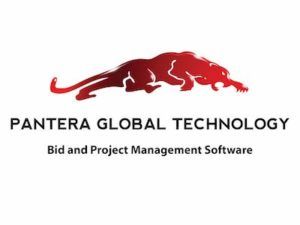Building Information Modelling (BIM) uses software to model a new building to optimize operations, management, and construction. BIM goes beyond a model of the building and represents a collection of data about the building that follows it throughout its lifecycle. It represents all aspects of building management, from the design and construction phase to operations. Now, it is a key to achieving sustainable construction objectives.
Sustainable Construction Objectives
The term sustainable construction goes beyond the mechanics of installing energy-efficient systems or using green building materials. Sustainable construction is a philosophy that does not end when the construction phase is over, but it continues through the maintenance and operations of the building throughout its lifecycle.
The concept of sustainable construction means creating a healthy environment that takes resource use, the local ecology, and human health into consideration. The construction industry is notorious for having a significant environmental impact. When the lifecycle of the building is being considered, the construction phase is often the focus when it comes to the environmental impact, but now, it is shifting toward creating an ongoing positive influence that will reduce the impact of the building on the environment over time.
BIM Offers Greater Transparency
BIM offers greater transparency during the design phase of the project. The model allows data to be shared among all stakeholders in the project from the first day. Everyone has access to the full, real-time costs of proposed materials and the scenarios that are being proposed. For instance, this data allows everyone to quickly see the costs and benefits of powering construction sites with solar power instead of using the grid.
BIM Streamlines Delivery and Offers Better Communication
The sharing of data goes beyond the stakeholders and extends to every member of the team. BIM 3D prototypes can be shared in a way that facilitates real-time collaboration. They can be used to test the logic, sequence of construction, and any change orders that may arise. The design team can use the model to estimate materials, make proposed changes to layout, and manage workflow throughout the entire process. The result is better communication among various team members and faster project delivery.
BIM Saves Costs
BIM saves costs by allowing the design team to see the impact of the prefabrication of building components. It also reduces errors, rework, and crew redundancy. This results in better resource and asset management during the project. The ability to see a clear overview of the project and the impact of small decisions on the overall picture provides valuable information that can be used to run a leaner design and construction phase.
Data-Driven Improvement During the Operations Phase
All members of the team can have real-time data throughout the design and construction phase of the project, but once the project is ready for occupation, BIM continues to support operations. Decisions can be made based on data rather than theory. The data can be input into the model before a decision is made to see the impact that it will have over the short and long term. The high level of detail in the data and the ability to share it means that the data can be passed easily between building managers and contractors. This allows changes to be made that result in data-driven improvements and quantifiable results to keep the building operating at its maximum efficiency.
Using BIM to Refine an Existing Design
The construction industry accounts for 36% of all energy usage and about 40% of all CO2 emissions. Now, clients demand green buildings, but this can come at a high cost to facilities managers. Green buildings have an impact on customer relationship management as consumers become more environmentally conscious.
The affordability of green buildings continues to be a challenge that many construction managers and building owners face. BIM can help improve the efficiency of the building and create better value for consumers who consider the environmental impact of their purchase decisions.
Using BIM for Ongoing Monitoring
BIM provides a way to track changes in building efficiency over time. Building managers have data that goes back to the early phases of the design. They can easily see if something has happened, such as the energy efficiency of the building has deteriorated or if water usage has increased. This ongoing data and tracking can give clues to the building manager that something has gone wrong and needs to be addressed long before any symptoms begin to appear. BIM Builds a Culture of Continual Improvement
The best reason to use BIM is that it allows the team to operate with the greatest efficiency from the beginning of the project. The ongoing data gives building managers the ability to develop a culture of continual improvement. They can run scenarios and evaluate the impact of new products or systems on the overall sustainability of the building. It allows them the ability to run audits and to continue to move towards sustainability goals.
BIM Allows Buildings to Contribute to Larger Goals
Green buildings and sustainable construction represent a tremendous challenge for the future, but they also represent the greatest opportunity for making an impact on the environment. For companies who foresee selling their building in the future, green buildings command about a 7% increase in value over those that are not green. Green buildings also experience a 30-40% savings in energy and carbon emissions every year. They also use about 20-30% less potable water.
Green buildings play a key role in achieving regional and national sustainability goals. BIM allows businesses to extend the concept of sustainable development beyond the design and construction phase. It allows the integration of an ongoing data set that can help make better sustainable management decisions that extend throughout the lifecycle of the building.









 The 2024 virtual Men’s Round Table will be held Q4, 2024, date TBD.
The 2024 virtual Men’s Round Table will be held Q4, 2024, date TBD.












